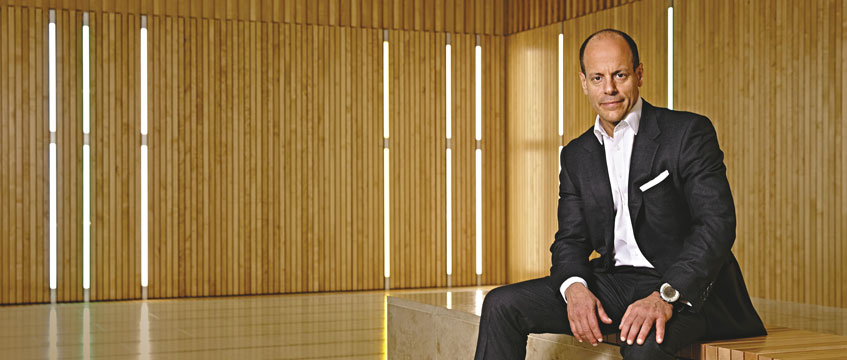Life sciences used to be something of a dirty word. Spoken about in hushed tones, it was secretive and expensive to build. The real estate investment community largely stayed away from it. Shops, offices and industrial were solid enough investments and much easier to understand and manage.
Today the life sciences environment couldn’t be more different from a real estate perspective. Investors around the globe are preparing to pour millions, if not billions, of pounds into the sector. Competition for assets and space has turned this once under-the-radar investment class into the next big thing.
But, say a panel of industry experts, it is not without its quirks and complexities.
“We are constantly getting calls from groups about establishing new life sciences locations,” says Colleen O’Connor, vice president of leasing, East Coast and UK markets, at BioMed Realty. “Some folks are approaching it the wrong way. They’ll come with a problem building or a problem location and they see that life sciences is doing so well and they really want to life-science the problem out of it.”
O’Connor, who understands life sciences from both sides of the Atlantic, says the sector is a little bit more complicated than that, and that it comes with a range of challenges.
Finding the right ecosystem
She says that, instead of thinking “can I life-science the problem” out of a location, anyone seeking to get into the sector needs to start with a much longer list of questions.
“The questions should be starting from a macro level,” she says. “Does this environment have the successful elements for a life sciences ecosystem? We think about that as an environment where there’s government support for the R&D and healthcare sector, where there’s the talent pool and the academia that fuels that talent pool, where there’s an existing industry base, established life sciences companies that have already called that area home, in an area where there’s funding and investment going in, whether that’s through venture capital funding or IPO activity.”
It is a long list of criteria before you can even think about whether life sciences could be a solution. Then there are the issues of a lack of data, the high costs involved with developing life sciences space and the unique demands of the life sciences community.
“Scientists don’t really care about real estate,” says Savills research director Steve Lang. “They just want it to be there when they need it. When the funding kicks in they want a lease structure that follows their funding. If they’ve got five years of money, they don’t want a seven-year lease.”
You need to have life after tenant for the space, so making sure you design it with the right infrastructure from day one, with that capital contribution, underlines the whole thesis of being able to deliver life sciences real estate to users
– Colleen O’Connor, BioMed Realty
“The most important thing when you’re designing the space is focusing on flexibility in life after tenant,” adds O’Connor. “There’s a variety of tenants in life sciences companies, some of which are smaller, growing companies looking to scale up. Those groups can’t commit to a space for 10 years. Their business is not going to be the same in two years. They’re going to get fundraising and they’re going to grow. And you need to have life after tenant for the space, so making sure you design it with the right infrastructure from day one, with that capital contribution, underlines the whole thesis of being able to deliver life sciences real estate to users.”
Anna Strongman, chief executive of Oxford Development Company, the university’s joint venture with Legal & General, says for a successful life sciences scheme, you have to invest in the building upfront and that flexibility is “absolutely key”. She says that Oxford is focusing on future proofing, which means making sure that it has 100% lab-enabled buildings.
But while the sector is complex and is forcing developers such as Oxford Development Company to put flexibility at the core of its offer, Strongman is inspired by the life sciences environment and believes it could bring about much-needed change in the real estate sector.
Raising the bar
“We should be challenged by their innovation and their outputs to raise the bar,” says Strongman. “I hope we can keep up, we’re certainly trying our best to do so. But what I think is interesting is the spirit of innovation and being willing to try out things. I’m really interested in different forms of development, for example, and trying to develop buildings that are genuinely flexible and could be very lightweight in structure, could be very temporary.
“I think it’s innovating in more conventional structures, but also thinking about different forms of development. And we’ve got the culture and the challenge to do that in this sector.”
Destined to grow
The opportunities to innovate are only headed in one direction because, despite the complexities, the life sciences sector in the UK is destined to grow. Savills’ Lang reckons there could be as much as 250m sq ft of demand for R&D space from just the 430 companies that work in the pharma and bio sectors, demand that he says will start to see other parts of the UK potentially benefit from the life sciences sector.
Currently, much of the demand for life sciences space is located around the golden triangle of Cambridge, Oxford and London. Cambridge is the most mature of the markets, while London is struggling to keep up with demand.
“New locations will emerge and existing locations will become stronger,” says Lang. “London will become stronger, Oxford and Cambridge will become stronger. There are lots of different facets to life sciences that will ensure that new locations grow – because there’s just so much capital for such an important cause around human health.”
Rob West, a partner at Clearbell Capital, which has been investing in the sector for a number of years, says the change in demand for life sciences space and as an investment class is astonishing. He compares having to incentivise tenants with free bikes when the firm first bought an asset at Oxford Science Park in 2008 to the sector now being so hot that it is difficult to secure assets at sensible prices. But the boom has brought excitement back to the UK investment market, he adds.
“I spend a lot of my day job trying to flog the benefits of UK investment in real estate to overseas investors and, to be honest, it’s been quite a tough sell for the last five years. We haven’t made it easy for ourselves, but it’s great to have champions where you can talk to real areas of world-class activity and ability and output. And in life sciences, we’re a global leader.”
“I think there’s an unbelievable amount of potential for growth in the market,” adds BioMed’s O’Connor. “And the pace at which the science is moving is incredibly exciting. I think we’re well positioned in the UK and specifically in the golden triangle to really help push that pace of innovation.”
To send feedback, e-mail samantha.mcclary@eg.co.uk or tweet @samanthamcclary or @EGPropertyNews











